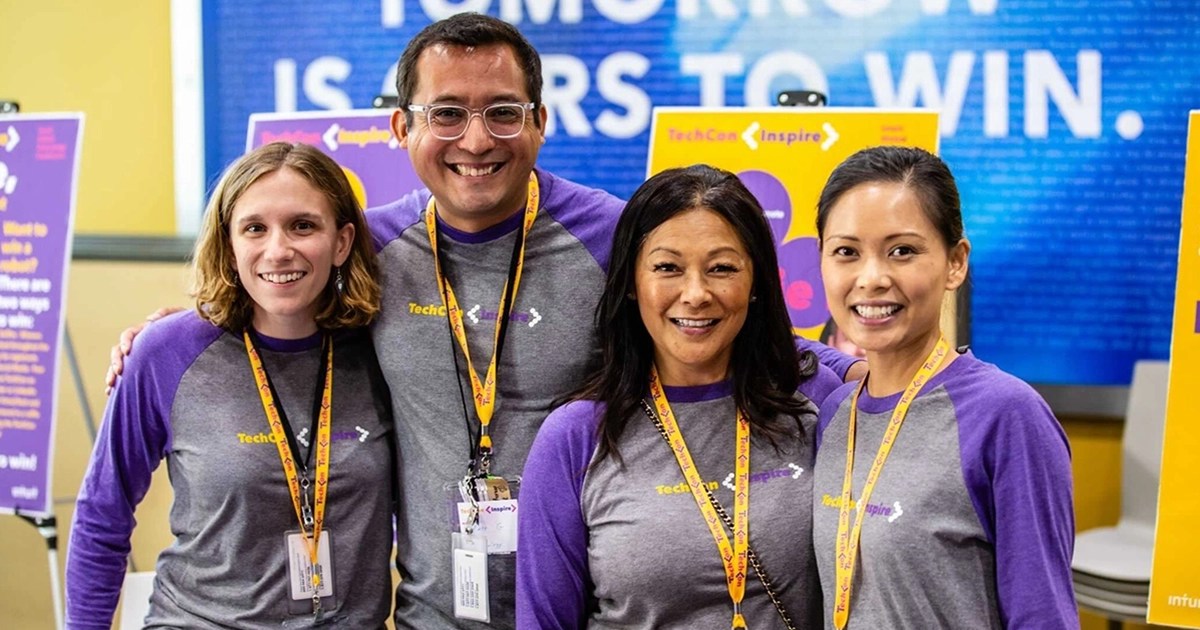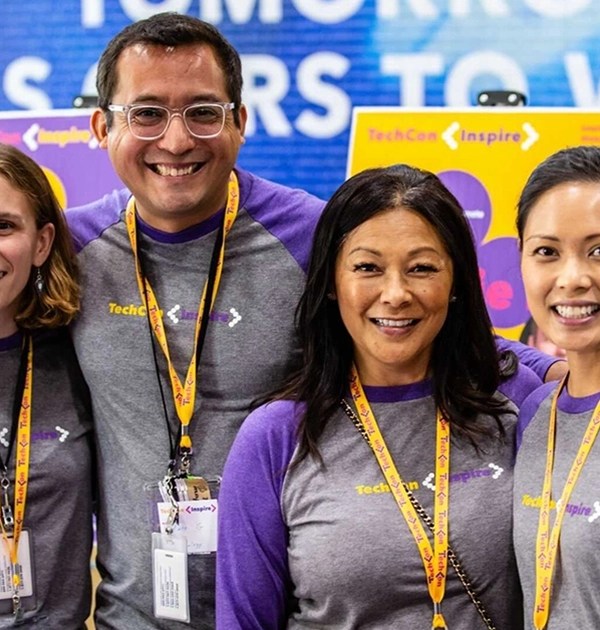To make the best decisions as an organization, it’s important to have a diverse team in which those voices are heard and part of the decision making process. So how do you achieve greater diversity in an organization? One powerful approach is to build a strong ally community — including allyship for women in the workplace.
At Intuit, we’ve made strides in closing some of the gender gap in our workforce but we know we need to do more. We’ve identified a need for more allyship across the organization. What exactly is an ally, and how can you become one? What does allyship look like in everyday life at work?
To answer these and other questions, we launched a series of employee trainings designed to build empathy around common workplace challenges for women.
Here are key takeaways that can help anyone become a better ally to women in the workplace.
Listen, amplify and encourage diverse voices. Stay open-minded and curious about the experiences and stories of people different from you. Ask questions, listen and learn from others. Explore ways that you can amplify and encourage hearing from voices in meetings that are underrepresented. “I would love your perspective,” goes a long way to creating a culture of inclusion.
Advocate for others. Be an advocate for both genders when you notice strong performance and potential. Be equitable when you consider and recommend people for high-profile assignments and stretch initiatives. Sponsoring and advocating for others is a great way to actively show your support for your team.
Be a mentor across gender lines. Share what you have learned and help others learn and improve their performance and impact. You have the ability to open doors and create opportunities for others. Make sure women are in key meetings and that they don’t just have a seat at the table but a valued voice.
Give direct feedback. Withholding or reserving feedback signals that you aren’t an advocate. Give specific feedback about observable outcomes and help employees identify what they need to work on to move their career forward. Be sure to assess performance related to business impact, then coach or advise on a path to advancement.
Give equal access. Not all employees have the same access, support, or performance feedback that leads to career-advancing roles. Do an honest assessment of the amount of time and coaching you provide to each team member. Every person is different and your coaching style may need to flex, but as a leader, it’s critical to provide equal access to you for every member of your team.
Rotate “housework.” Be thoughtful of who on your team is assigned the “housework” of taking notes, planning parties, ordering food, scheduling events or mentoring interns. Rotate these tasks among your team so no one person does them most of the time. Not only does this help ensure that a certain individual or group of people aren’t always doing the same tasks, but it opens up opportunities for others to flex their skills in support of the team.
Flex on schedules. Where possible, allow employees to define schedules that help them manage their families and personal priorities. Help create team working hours to prioritize collaborating together at times that have the highest impact for both the team and the business. On the flip side, you can also declare meeting free time, like “no meetings on Fridays.” This approach allows employees to have uninterrupted time to work plus gives the team added flexibility to manage their schedule.
Be sensitive to “The Only” experience. When someone is “the only” on a team, they can feel left out or unintentionally ignored. Allies are aware of that experience and the feeling of being “the only.” Make sure they know that you and the organization have their back, which frees the individual to be themselves unapologetically.
Diversify your network. Introduce yourself to others. Ask for referrals. Meet people different from you at work, events, and free time. Read, watch and listen to content from people different from you.
Be accountable. Create gender equity metrics for yourself and your teams in interviews, hires, promotions and the makeup of project teams. For example, partner with your talent acquisition team and hold yourself accountable to ensure there is a diverse group of candidates interviewed for every open role. Share your performance against these metrics regularly and openly.
Be aware of unconscious bias when hiring. Take a close look at job descriptions and remove biased language or unnecessary requirements that are not necessary for the job. You may be biased if you look to a specific gender to solve a problem, or choose who to listen to or who to give opportunities to. Ensure that your hiring criteria are tangible and non-subjective to ensure you’re evaluating candidates fairly. Teams are stronger when they’re made up of people with diverse skills, perspectives and life experiences.
Overcompensate to compensate. Go the extra mile, and then some, to correct your actions as needed. That could mean spending a disproportionate amount of time doing one-on-ones with female engineers, or if your podcast guest wants to talk about technology, asking them off the bat about diversity in tech. Use your influence, knowledge and organizational capital to advocate for women. Call out gender bias when you see it.
Talk to others. Share what you have learned with others. Start the conversation. Carry the momentum forward. How you follow through matters and turns intention into action.
Importance of allyship and our commitment
Implementing best practices for everyday allyship should not fall on the shoulders of few. Everyone can be an ally to women in the workplace. Whether you’re a woman supporting other women, or an ally supporting women, there’s a role for everyone to play and together, we can help raise awareness against bias and take actions to create a more equal world.
Allyship needs to be present at all levels, from your peers all the way up to senior leadership. It’s something to be lived and breathed at all times, wherever you are and whoever you’re talking to.
Our commitment to diversity, equity and inclusion date back to the early days of Intuit when we first declared our core values and mission. From our focus on pay equity to our employee resource groups, and beyond, diversity, equity, and inclusion isn’t just something we do, it’s part of who we are. Our approach starts from the top — by setting tangible goals, measuring them, and holding ourselves accountable — to creating a safe and inclusive environment where our employees can do the best work of their life. When our workforce composition reflects the millions of customers we serve, we have deeper empathy and are able to solve problems and create innovative solutions to help our customers.










